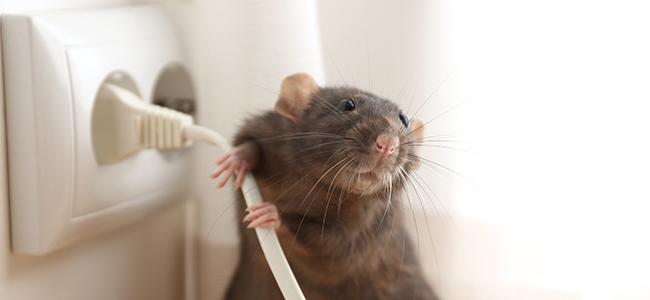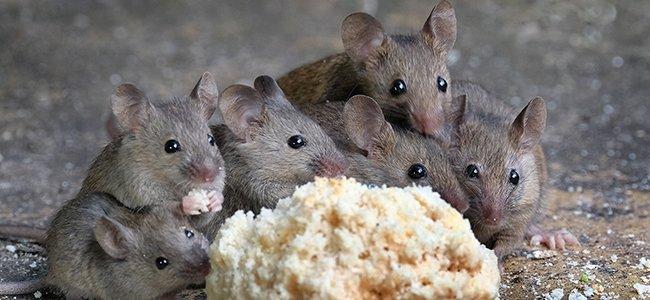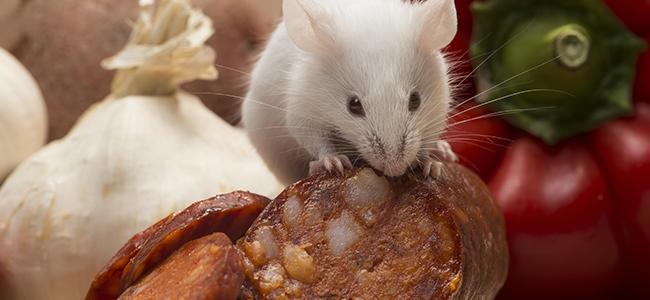
The Trick to Keeping Your Maryland Home Rodent Free
01/03/2022
Do you hear rodents scurrying around your Maryland home? You're not the only one with a rodent problem. For centuri...
READ MORE >

Mice are one of the most common home-invading pests that call Maryland home, and they’re the most common home-invading rodent. As one of the larger pests to get into Maryland homes, much larger than most insects, and as one of the only mammals to invade Maryland houses, it’s no wonder so many people have questions about mice and the problems they can cause.
Understanding what mice are capable of and why they get into your house not only puts your mind at ease, but also provides you with the information you need to make informed decisions about any mouse infestations that might make their way into your home. For answers to some of Maryland’s most pressing mouse questions, read on.
Wanting to know the answer to this question makes sense for a couple of reasons. First, the thought of having mice in your house that can climb up your walls or skitter across your ceiling is disturbing to say the least. Even if you’re not afraid of mice, the thought of one potentially falling on you or running up your walls out of your reach is not a pleasant thought.
Second, knowing if they can climb walls will give you a better understanding of what they might be able to access inside your house. Could you find them in your kitchen cupboards, your bathroom’s medicine cabinets, or your living room’s fireplace mantle?
There’s good news and bad news when it comes to the answer to these questions. The good news is that you won’t find a mouse climbing across your ceiling. The bad news is that you could find them almost anywhere else.
Mice can in fact climb walls. When encountering a smooth, vertical wall, they can climb about a foot up it. Anything that gives them a better grip than a smooth wall will allow them to climb higher. Furthermore, they can climb from object to object, which means they can easily get into your cupboards by first climbing up shelves and other items.
Mice do not have very good eyesight, regardless of whether it’s day or night. They can only see clearly one to two feet in front of them and they do not see well in low light, which makes their vision especially bad at night. However, because their eyes protrude out of their heads, they have the ability to see in all directions and can detect movement over 40 feet away - useful for detecting potential predators at a distance.
Despite their poor eyesight, mice more than make up for it with their other senses. They have excellent hearing and an exceptional sense of smell. These two senses allow them to perceive and understand their surroundings very well in darkness or in light, despite what they lack in the way of sight.
Like any other animal, mice have three basic needs to survive: Food, water, and shelter. In the summer they can usually fulfill these needs out in nature without a problem. Food supplies are plentiful, water can easily be found, and it’s warm enough that any place that offers them a spot to hide provides ample shelter.
However, once the weather starts to cool as fall and winter approach, their basic needs become harder to fulfill in nature, pushing them indoors. Food sources that were plentiful in summer begin to dry up. Water sources begin to freeze. Shelters that were warm enough in the heat of summer are no longer sufficient to keep mice warm through the cold of winter.
When this occurs, mice begin to look for their basic needs in new locations. Usually, this requires that they go into locations where humans dwell. Your Maryland house is the perfect spot for mice to spend their winter because it provides for all of their needs at once, usually within close distance of one another. Your house is filled with food, there is water available inside, and it has plenty of nooks and crannies that provide warm, safe shelter.
Understanding the three basic needs of mice helps in understanding what attracts them to your house. To get more specific, outdoor and indoor attractants are listed below.
First, mice will be drawn to your house by what they find outside. If you put pet dishes outside with food for your dog or cat, mice will find an automatic source of nourishment. They’ll also eat bird seed, fallen fruit from fruit trees, or even items from your vegetable or flower gardens. Outdoor garbage bins that don’t have tightly fitting covers also provide a plentiful food source for mice.
Water sources are often plentiful outside Maryland homes. Pet dishes and bird baths are two water sources that you purposely put outdoors, but there are many other unintentional water sources that can attract mice. Clogged gutters collect water, as do overturned children’s toys. Tire swings, upturned buckets, and even pool covers that aren’t pulled taut can all allow water to collect. Poor drainage around your house, low spots on your lawn, and overgrown foliage also allow for an excess of moisture.
Mice will also come near the exterior of your house if they can find plenty of places to hide. Rock walls and wood piles are full of spaces where mice can remain hidden away, while tall grasses and overgrown shrubbery allow them to move close to your house unnoticed.
Indoors, you’re likely to not fare much better when it comes to food, water, and shelter. Look around your kitchen. Do you leave any food, such as fruit, out on the counter? Have any containers spilled, even just a little bit, in your pantry? Do you clean up after every meal or are there dirty dishes in your sink and crumbs on your countertops? All of these areas are common spots for mice to find and collect food.
While water sources are a bit more difficult to come by indoors, they’re not entirely absent. Besides the already mentioned pet water dish, you probably have at least one drippy faucet in your house. It’s also possible that you have a leaky pipe under a sink or in the basement that you’re not aware of.
Finally, there’s the matter of shelter. Of course you’re not going to shut off your heat in the wintertime to try to avoid a mouse infestation, but mice are attracted to other things when looking for shelter too. The more cluttered your house is, the more inviting they’ll find it since it provides more areas to hide. An attic or basement filled with storage boxes offers everything a mouse needs to find materials to build a new nest in your house.
Knowing what attracts mice to your house is essential in knowing how to minimize your risk for infestation. Once you understand the attractants, you can work to eliminate as many of them as possible. Starting outside, then moving inside, do the following to keep mice out of your house:
Remove pet food and bird feeders that are outside your house.
Pick up fruit that has fallen off trees.
Store garbage bins well away from your house and make sure they have tightly fitting lids.
Harvest your vegetable garden when it’s ready and remove plants when they’ve gone by.
Remove pet water dishes and birdbaths from your lawn.
Clean out your gutters seasonally.
Put away or overturn items that might collect water, such as buckets and children’s toys.
Frequently dump out or eliminate water that collects on items you can’t remove, such as tire swings or pool covers.
Ensure your property has proper drainage that runs away from your house.
Fill low spots in your lawn where water collects.
Cut back foliage and shrubbery that doesn’t allow enough sunlight to penetrate.
Consider removing rock walls or other landscaping elements that allow mice to hide in them.
Store firewood far away from your house.
Keep your grass trimmed short.
Don’t store any food on your counters; instead, put them in airtight containers or in the refrigerator.
Keep pantry items in hard-sided containers and clean up any spills immediately.
Wash dishes immediately after use.
Wipe down countertops after each meal.
Sweep or vacuum frequently.
Take out the trash on a regular basis.
Fix drippy faucets.
Check often for leaking pipes.
Remove as much clutter as possible.
Store items in hard-sided containers, not cardboard boxes.
Another thing to consider when trying to keep mice out of your Maryland home is how they get inside in the first place. Mice exploit weak areas around the exterior of your house in order to get inside. They only need a hole the size of a dime to get in, and if they find a smaller opening, they can easily chew away at it until it’s large enough to squeeze through. Look around the exterior of your house, checking for cracks, holes, or any damage that a mouse could use to it’s benefit. Fix any problem areas you find.
If you’ve seen a mouse in your house, you may be hopeful that it’s just an odd, one-time occurrence. Although it’s possible that one lone mouse somehow found it’s way inside your Maryland home, unfortunately, this is rarely the case.
Mice are social creatures that live in (typically large) groups. If one has gotten into your house, it is almost a certainty that others are somewhere inside where you can’t see them. Furthermore, mice breed very rapidly. One female mouse can have a litter of pups, usually around six to a litter, every three weeks.
The bottom line is that if you have spotted a mouse in your house, you can safely assume that you have a mouse infestation. Don’t wait to take action thinking it will go away on its own because the longer you wait to do something about it, the more mice you’ll end up with and the more problems they’ll begin to cause.
Getting rid of mice is no easy task if you attempt it on your own. Setting out traps may yield some results, but won’t eliminate the entire infestation. Using poison can be effective, but can also be dangerous for your family or pets, and can lead to dead animals rotting in areas you have trouble accessing.
Instead, if rodents are threatening your Maryland home, your best bet is to contact the professionals at American Pest. We have the experience, knowledge, skill, and equipment to fully eliminate your mouse infestation, but we don’t stop there. Our rodent control plan is designed to prevent future infestations of mice or rats. We do this by sealing off the entry points mice have used to gain entry to your house, providing you with the information you need to make your home unattractive to mice, and delivering follow-up services to maintain your home’s protection.
Our five-step rodent control plan is just what you need to keep your Maryland home mouse-free both now and in the future. Don’t wait until your mouse infestation has grown into a major problem. For more information about our services or to schedule an inspection, contact American Pest today.

01/03/2022
Do you hear rodents scurrying around your Maryland home? You're not the only one with a rodent problem. For centuri...
READ MORE >

12/30/2021
Mice and other rodents are troublesome pests that you don’t want to find in your Washington D.C. home. Learn why these pests are so dif...
READ MORE >

10/20/2021
Rodents have a long history of human dependency, which is why homes and businesses are often subject to infestations. Rodents have become reliant o...
READ MORE >

Protect your home and family from nuisance and potentially damaging pests with a Preferred Care home pest control plan. Starting at $49/month

Don't let the bed bugs bite a second longer. Contact American Pest for the most comprehensive bed bug control in the industry. Learn More

Our certified rodent control pros will put an end to your frustration by getting rid of rats and mice inside your home. Learn More

Say goodbye to wood-destroying termites in your home when you contact American Pest for expert termite control. Learn More

Trust American Pest to deliver professional backyard tick control services that are guaranteed to get results. Learn More

Don't spend the warm-weather season indoors, find out how American Pest's professional treatments get rid of mosquitoes. Learn More
Fill out the form and recieve feedback in less than 5 minutes. For immediate service please call.